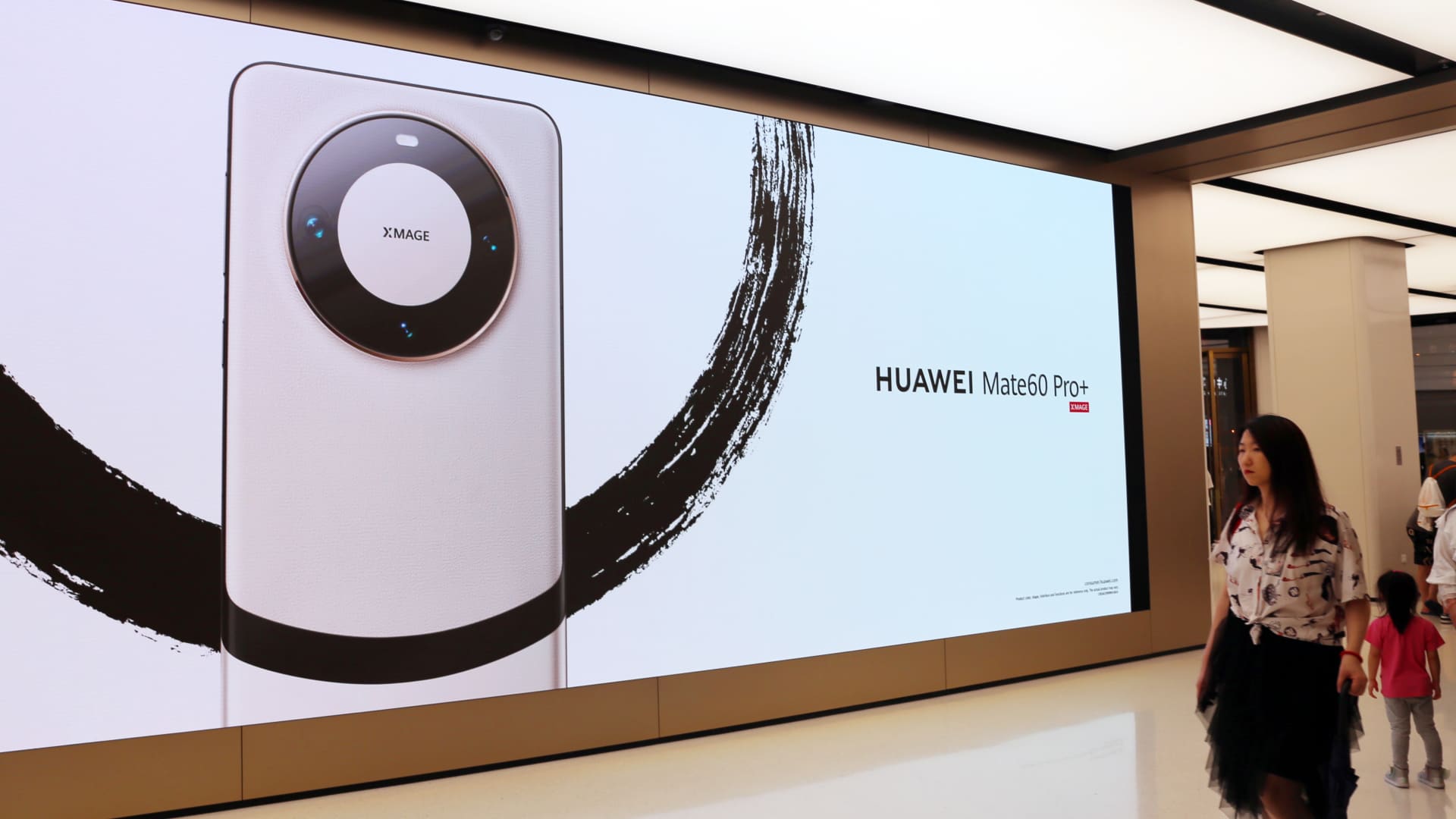
A poster of a Mate 60 mobile phone with satellite capabilities at Huawei’s flagship store in Shanghai, China, on Sept. 24, 2023.
CFOTO | Future Publishing | Getty Images
Huawei was the fastest-growing smartphone maker in China in the third quarter after the company released a smartphone with a surprisingly advanced chip inside.
That growth is propelling Huawei to being within touching distance of the top five smartphone makers by market share in China once more.
Sales of the Chinese technology giant’s smartphones in China grow 37% year on year, according to a report from Counterpoint Research released on Thursday. It commanded a 12.9% market share in the quarter, up from 9.1% in the same period last year.
Sales of Honor, the largest smartphone maker by market share, rose just 3% year on year. Vivo, Oppo and Apple all saw double-digit declines, according to Counterpoint Research. The market research firm did not provide the number of units that were sold per company.
Huawei, once the world’s biggest smartphone maker, saw its market share and business crumble after a number of U.S. sanctions that began in 2019 cut the company off from key technologies, in particular semiconductors.
The Shenzhen-headquartered giant designs its own chips, under the brand name Kirin, which were manufactured by Taiwanese firm TSMC. But U.S. rules stopped TSMC from making chips for Huawei, which also couldn’t get its hands on other technology required for 5G, or next-generation mobile internet.
Huawei’s phones lost their lustre among consumers as a result.
‘Huge splash’
But in September, Huawei released a new phone called the Mate 60 Pro in China, equipped with an advanced 7 nanometer chip and 5G connectivity — technology that U.S. sanctions had been designed to stop Huawei from getting its hands on.
That sparked a lot of interest among Chinese consumers. In the first six weeks of the phone’s release, Huawei sold 1.6 million units, Counterpoint Research said.
This device has helped propel Huawei’s growth.
“It has made a huge splash in the market, contributing big to Huawei’s smartphone sales growth” in the third quarter, Ivan Lam, senior analyst at Counterpoint Research, said in a press release on Thursday.
Huawei was Apple’s only real challenger in the high-end segment of the smartphone market in China for some time. Its return could pose new challenges to Apple in China, analysts previously told CNBC.
But analysts also said that if Huawei’s new chip is put into some mid-to-lower-end phones, the company could take market share away from other players and be propelled back into the top five.
“If Huawei expands the new Kirin chipset into its low-to-mid-range portfolio in the future, it has the potential to disrupt the competitive dynamic among leading vendors,” Lucas Zhong, research analyst at Canalys, said in the firm’s report on China’s smartphone market, which was released Thursday.
China’s smartphone market declined 14% year on year in shipments in 2022, Canalys data shows, as strict Covid-19 pandemic controls remained in place and consumer spending was weak.
Canalys said shipments of smartphones for the third quarter of this year fell 5% year on year in China, potentially signaling the worst is over.
“The market has bottomed out in 2023 … and there is an expected gradual demand recovery,” Canalys said in its report.




